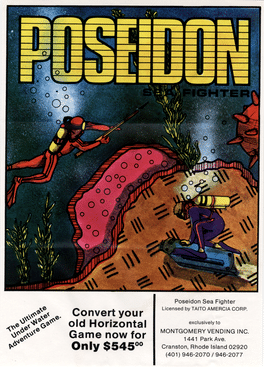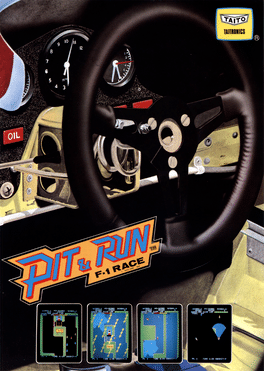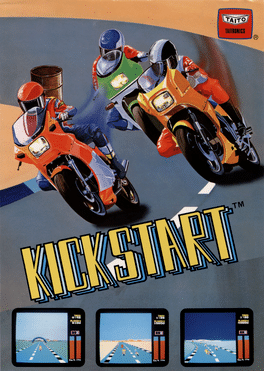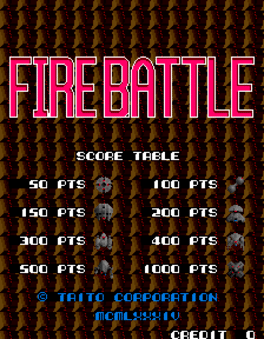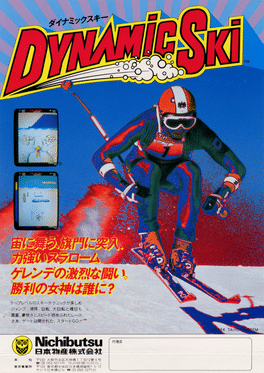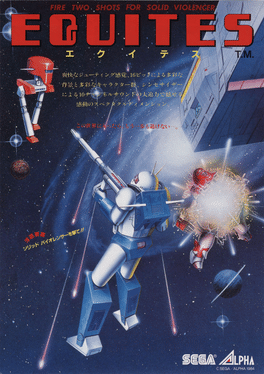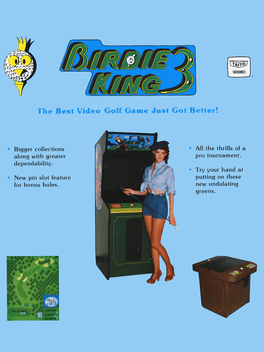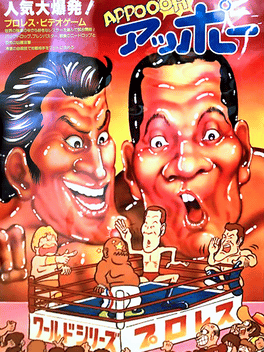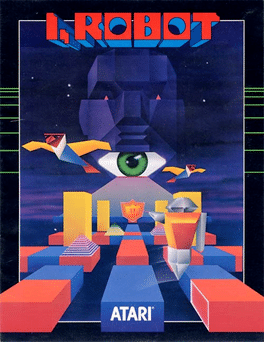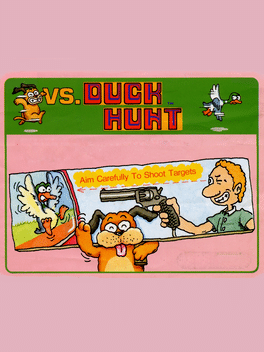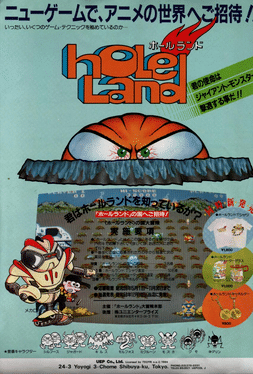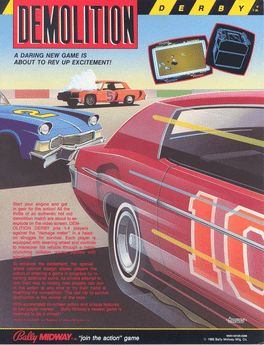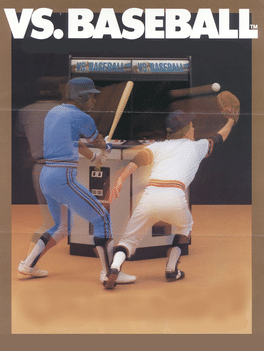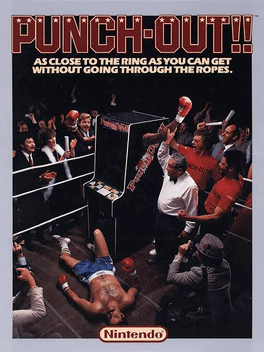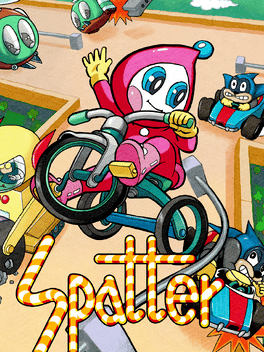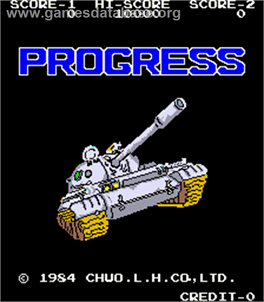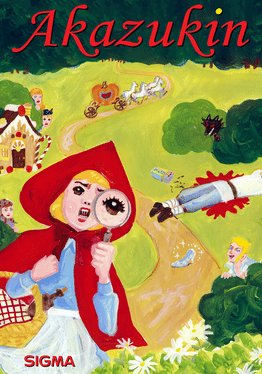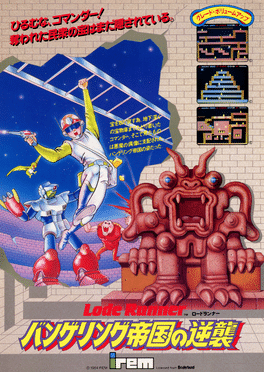New Arcade Games - Page 113
-
Sea Fighter Poseidon
1984
Sea Fighter Poseidon
1984
Rescue hostages while defeating the enemy. The number of hostages to rescue increases with each level. When all the hostages have been rescued, the level ends. -
Pit & Run
1984
-
Kick Start
1984
-
Field Day
1984
-
Fire Battle
1984
Fire Battle
1984
Fire Battle is a science fiction themed vertical scrolling shoot 'em up game in which you take control of a spacecraft. You gather points by shooting various spacecraft, static guns and robots until your ship is destroyed. The ship has separate weapons for air and ground based enemies. Air based units can be destroyed with a twin bullet gun and ground based units with a slower bomb like weapon. You can play solo or with a friend in alternating turns. -
Dynamic Ski
1984
-
Equites
1984
-
Birdie King 3
1984
-
Appoooh
1984
-
I, Robot
1984
I, Robot
1984
The game play consists of moving robot1984 over all of the red tiles while avoiding objects flying at you from the back of the screen. Eliminating the red tiles diminishes the shield at the back of the playfield which prevents you from flying to the next level. To get to all the red tiles, players sometimes need to leap across empty space which creates a permanent bridge between the two points. Leaps across empty space have to be timed so that the "eye" of Big Brother in the back of the playfield, which randomly opens and closes, does not see robot1984 and destroy him. -
Vs. Duck Hunt
1984
Vs. Duck Hunt
1984
Duck Hunt was released as an arcade game in the Nintendo VS. series in 1984 as Vs. Duck Hunt, and is included in the PlayChoice-10 arcade console, an arcade machine with as many as 10 different games previously available only on the NES. The console supports two light guns, allowing two players at once. Gameplay consists of alternating rounds with 12 ducks/targets per round instead of 10 and sometimes requires the player to shoot three ducks/targets at a time instead of two. In addition, the player is given a limited number of lives; every duck/target that is not hit costs one life. When all lives are gone, the game ends. After every second round, a bonus stage is played in which ducks can be shot for points as they fly out of the grass. However, the hunting dog occasionally jumps out, putting himself in the line of fire and creating a distraction. If the player shoots the dog, the bonus stage immediately ends. -
Hole Land
1984
-
Demolition Derby
1984
Demolition Derby
1984
Demolition Derby is an arcade game, that was released by Bally Midway in 1984. Up to two or four players must take control of a car in, as the name suggests, a demolition derby - and there will also be at least two gray CPU-controlled cars in every derby. -
Vs. Baseball
1984
Vs. Baseball
1984
Players pick from a list of teams in this Dual Vs. baseball game. Time-points are awarded per credit which are either increased with runs batted in or decreased by opponent's runs or just regular plays. The gameplay can be very frustrating because infielders may not pick up a ball at their feet since they are waiting for another player to come over and pick it up. -
Kung-Fu Taikun
1984
-
Punch-Out!!
1984
Punch-Out!!
1984
star 7.6Punch-Out!! is a boxing arcade game by Nintendo, released 1984. It was the first in a series of successful Punch-Out!! games that produced an arcade sequel known as Super Punch-Out!!, a spin-off of the series titled Arm Wrestling, a highly popular version for the NES originally known as Mike Tyson's Punch-Out!!, and Super Punch-Out!! for the SNES. The arcade game introduced recurring video games characters such as Glass Joe, Piston Hurricane, Bald Bull, and Mr. Sandman. It is also notable to be the debut project for Koji Kondo, who would later go on to write the acclaimed music for the Super Mario and The Legend of Zelda series. -
Spatter
1984
Spatter
1984
Spatter is a fast-moving maze-chase game in which the player takes on the role of a tricycle-pedalling child out collecting flowers, while trying to avoid collisions with the numerous enemies giving chase. Most of the maze paths are separated into two lanes, with a springy elastic fence separating them. This fence is the key to playing the game, as players can jump into it, allowing them to squeeze past oncoming enemies in the same lane. Also, enemies on the opposite side of the fence can be sent flying from the track. Solid blocks also feature, and these can be pushed into enemies to destroy them. Special bonus rounds feature after stages two, six, ten and fourteen. These rounds are platform-based, with the player trying to collect as many items of fruit as possible before heading up to the highest platform, to meet up with a friendly elderly lady who is waiting there. 'Fruit' and 'Happy' bonuses are then awarded. -
Progress
1984
-
Akazukin
1984
-
Lode Runner II
1984
Lode Runner II
1984
In 1984, after developing the first arcade conversion of Lode Runner, Irem developed a sequel in a very short period of time. This second version contained 30 selected levels from the 150 original levels, in comparison to the first version's 24 levels. Other than the new levels, and some new looks for the enemies (all of whom behave the same) there is no difference in game play. Irem brought many of their arcade inspired levels to the Famicom Disk System under the names Super Lode Runner and Super Lode Runner II.
